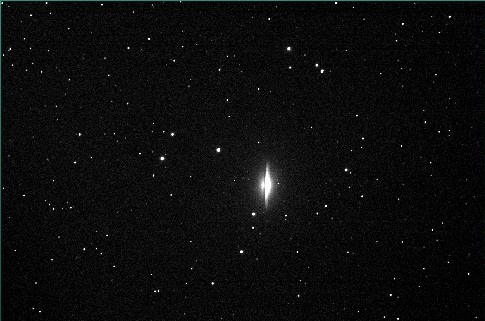Nasa Space Telescope Discovers Unique Galaxy With Split Personality [PHOTOS]
A unique galaxy that has split personality has been discovered by Nasa, according to a new report.
Astronomers from the Nasa have discovered the Sombrero galaxy which has split personality. It is round in shape and has a slender disk embedded inside.
Usually, there are two types of galaxies, one is rotund and other, thin disks like our spiral Milky Way.
But Sombrero galaxy has both the shapes which make it unique and is discovered with Nasa's Spitzer Space Telescope.
The study claims that Sombrero galaxy is one of the first known galaxies to exhibit two different types of characteristics . The findings will lead to a better understanding of galaxy evolution, a topic still poorly understood.
"The Sombrero is more complex than previously thought," said Dimitri Gadotti, scientist at the European Southern Observatory in Chile, in a statement.
"The only way to understand all we know about this galaxy is to think of it as two galaxies, one inside the other," he said.
The Sombrero galaxy, also known as NGC 4594, is located 28 million light-years away in the constellation Virgo.
From Earth, it appears to have a thin edge on its flat disk and a central bulge of stars resemble a wide-brimmed hat. Astronomers are not sure whether the Sombrero's disk is shaped like a ring or a spiral, but believe that it belongs to the disk class.
But now Spitzer telescope using infrared vision has captured a different view of the galaxy, they found that the galaxy is both round and it also has a thin disk.
"Spitzer is helping to unravel secrets behind an object that has been imaged thousands of times," said Sean Carey, scientist at the Nasa's Spitzer Science Center, in a statement.
"It is intriguing Spitzer can read the fossil record of events that occurred billions of years ago within this beautiful and archetypal galaxy," he added.
Even though we might feel that this galaxy could have formed because of collision between giant round galaxy and a spiral disk, astronomers believe that it is highly impossible because that process would have destroyed the disk structure.
According to the astronomers, the giant round shaped galaxy was flooded with gas more than nine billion years ago. They said in early universe gas clouds were common,but these gas clouds sometimes fed growing galaxies, causing them to bulk up. The gas would have been pulled into the galaxy by gravity, falling into orbit around the center and spinning out into a flat disk. Stars would have formed from the gas in the disk.
"This poses all sorts of questions," said Rubén Sánchez-Janssen, scientist at the European Southern Observatory, in a statement. "How did such a large disk take shape and survive inside such a massive elliptical? How unusual is such a formation process?"
Rubén Sánchez-Janssen believe that the answers could help them piece together how other galaxies evolve. Another galaxy, called Centaurus A, appears also to be an elliptical galaxy with a disk inside it. But its disk does not contain many stars. Astronomers claim that Centaurus A could be at an earlier stage of evolution than the Sombrero.
The findings also answer the mystery about the number of globular clusters in the Sombrero galaxy. Globular clusters are spherical chunks of old stars. The Sombrero galaxy has more than two thousand globular clusters while elliptical-shaped galaxy typically have a few thousands and spiral-shaped galaxies have a few hundred globular clusters.



© Copyright IBTimes 2024. All rights reserved.






